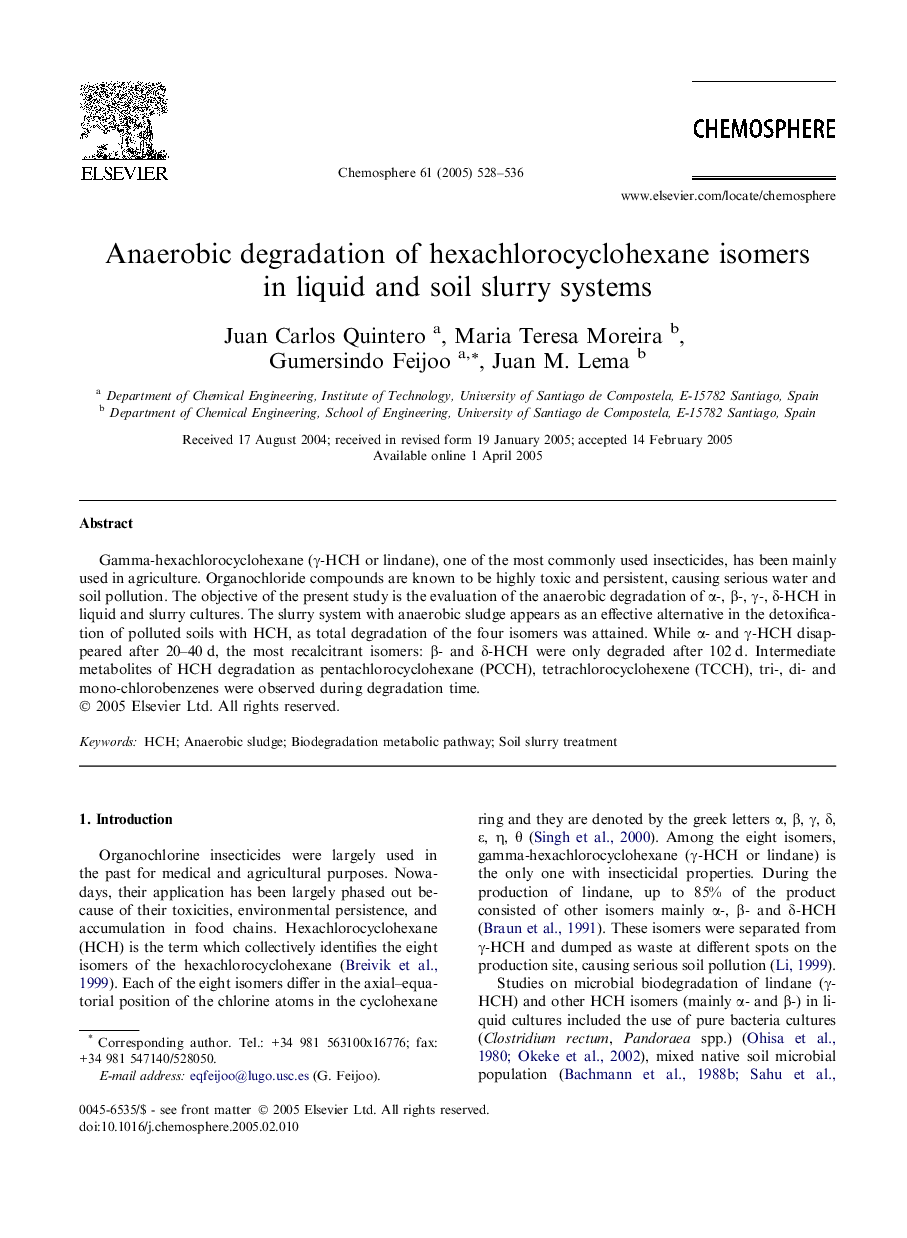| Article ID | Journal | Published Year | Pages | File Type |
|---|---|---|---|---|
| 9451379 | Chemosphere | 2005 | 9 Pages |
Abstract
Gamma-hexachlorocyclohexane (γ-HCH or lindane), one of the most commonly used insecticides, has been mainly used in agriculture. Organochloride compounds are known to be highly toxic and persistent, causing serious water and soil pollution. The objective of the present study is the evaluation of the anaerobic degradation of α-, β-, γ-, δ-HCH in liquid and slurry cultures. The slurry system with anaerobic sludge appears as an effective alternative in the detoxification of polluted soils with HCH, as total degradation of the four isomers was attained. While α- and γ-HCH disappeared after 20-40 d, the most recalcitrant isomers: β- and δ-HCH were only degraded after 102 d. Intermediate metabolites of HCH degradation as pentachlorocyclohexane (PCCH), tetrachlorocyclohexene (TCCH), tri-, di- and mono-chlorobenzenes were observed during degradation time.
Keywords
Related Topics
Life Sciences
Environmental Science
Environmental Chemistry
Authors
Juan Carlos Quintero, Maria Teresa Moreira, Gumersindo Feijoo, Juan M. Lema,
